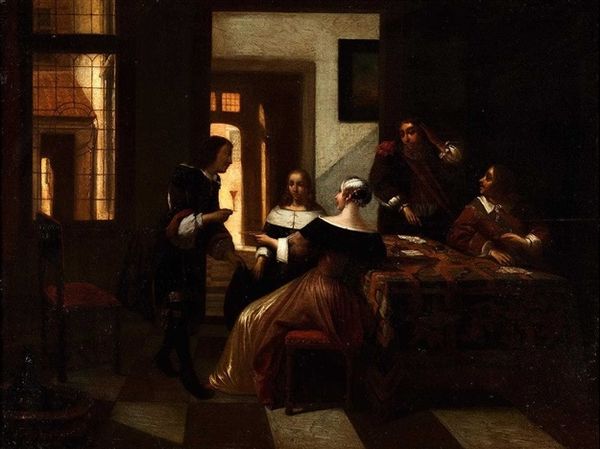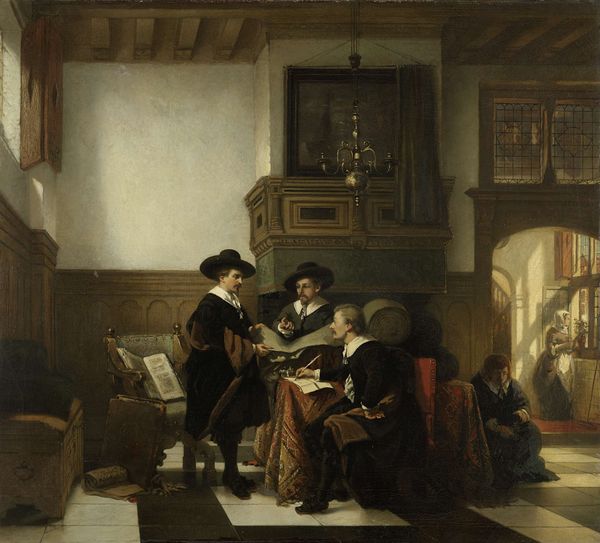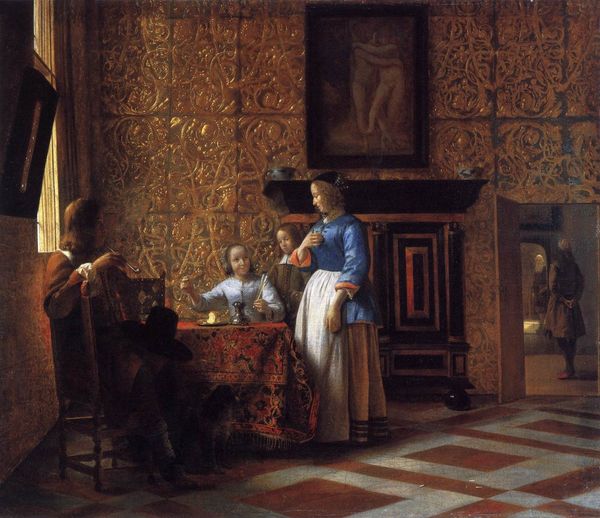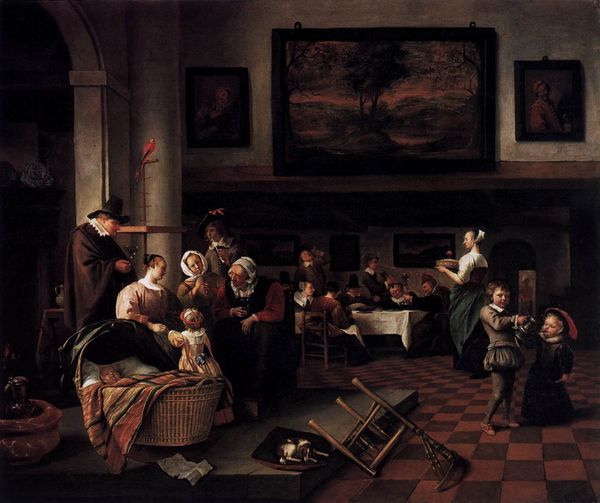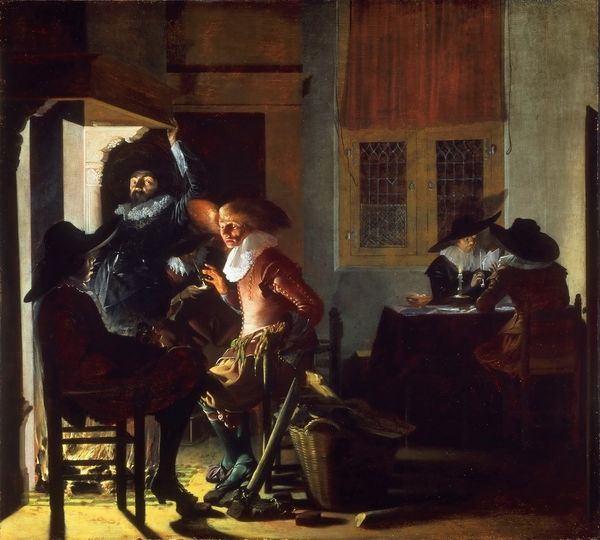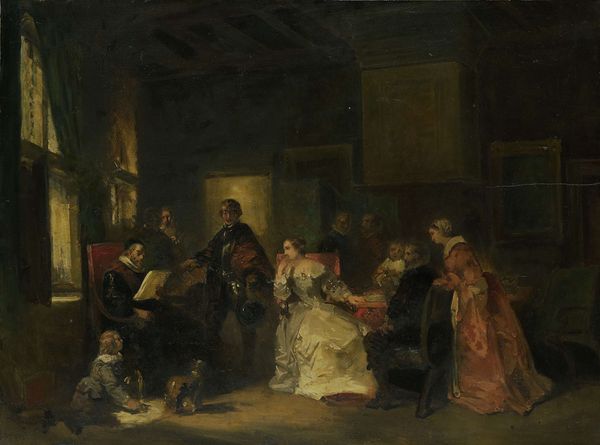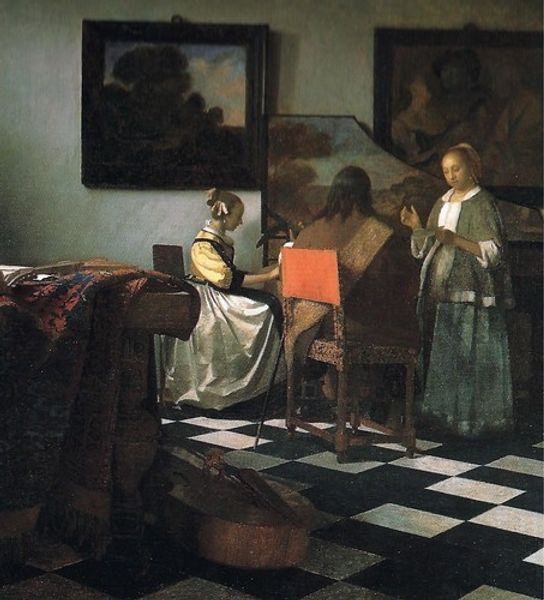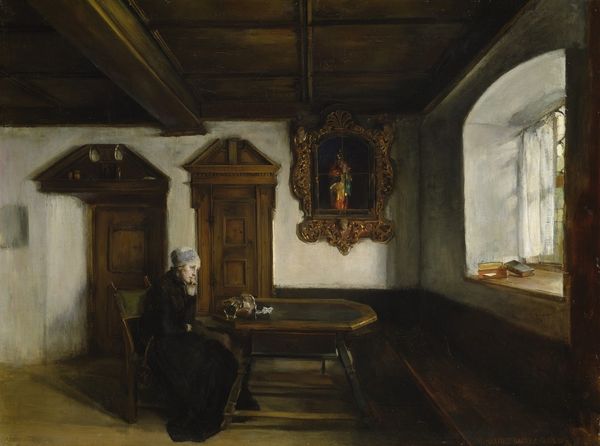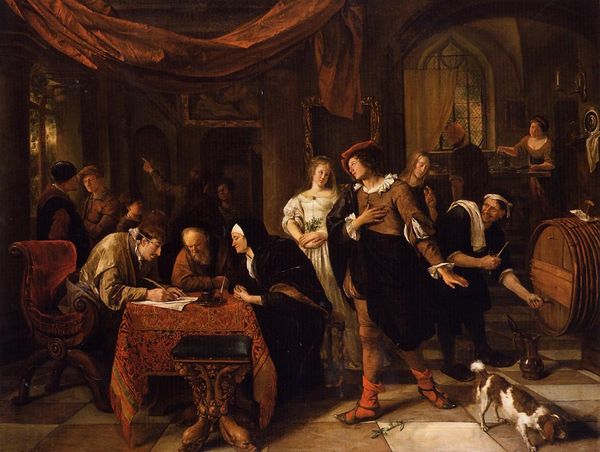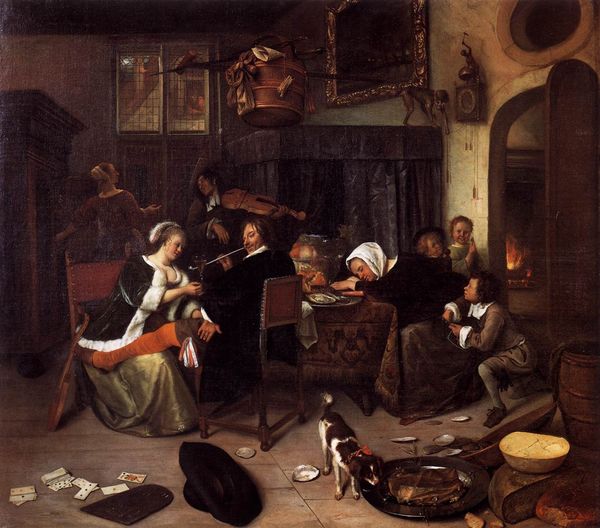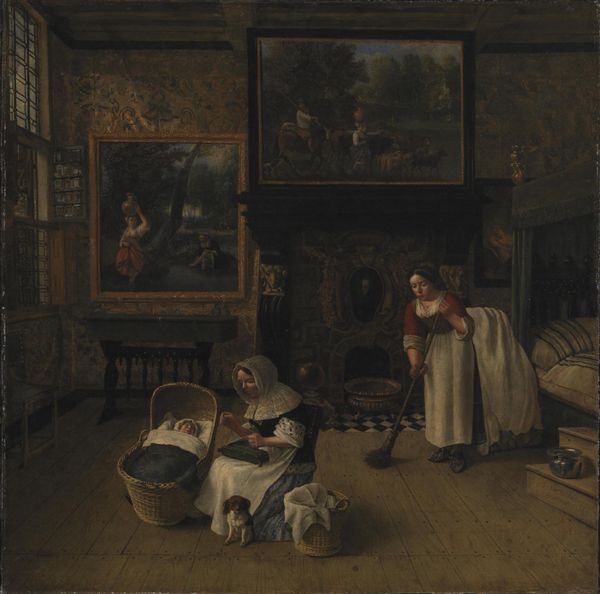
Gezelschap in 17e-eeuwse dracht bij een tafel waarop een Nautilusbeker 1873
0:00
0:00
painting, oil-paint
#
portrait
#
dutch-golden-age
#
painting
#
oil-paint
#
sculpture
#
oil painting
#
group-portraits
#
genre-painting
#
history-painting
#
realism
Dimensions: height 62 cm, width 72.5 cm, thickness 3.3 cm, depth 7.8 cm
Copyright: Rijks Museum: Open Domain
Johannes Stroebel painted this scene of a 17th-century company around a table with a nautilus cup, likely in the late 19th century. Note how the use of oil paint, applied in thin layers, allows for meticulous detail. Consider the nautilus cup itself. These objects were luxury items, made by highly skilled artisans who combined the natural beauty of a nautilus shell with precious metals like silver or gold. The shell, harvested from distant seas, speaks to global trade networks, while the craftsmanship represents specialized labor. Stroebel highlights these signs of wealth and status, as well as the leisurely consumption of goods. The act of painting itself requires skill and labor, transforming humble materials into a representation of a specific time and place. By focusing on material culture, the artwork asks us to reflect on the labor, politics, and consumption practices that underpin social life, both in the 17th century and Stroebel's own time. Ultimately, the image encourages us to look beyond the surface, considering the relationship between art, craft, and social context.
Comments
No comments
Be the first to comment and join the conversation on the ultimate creative platform.
